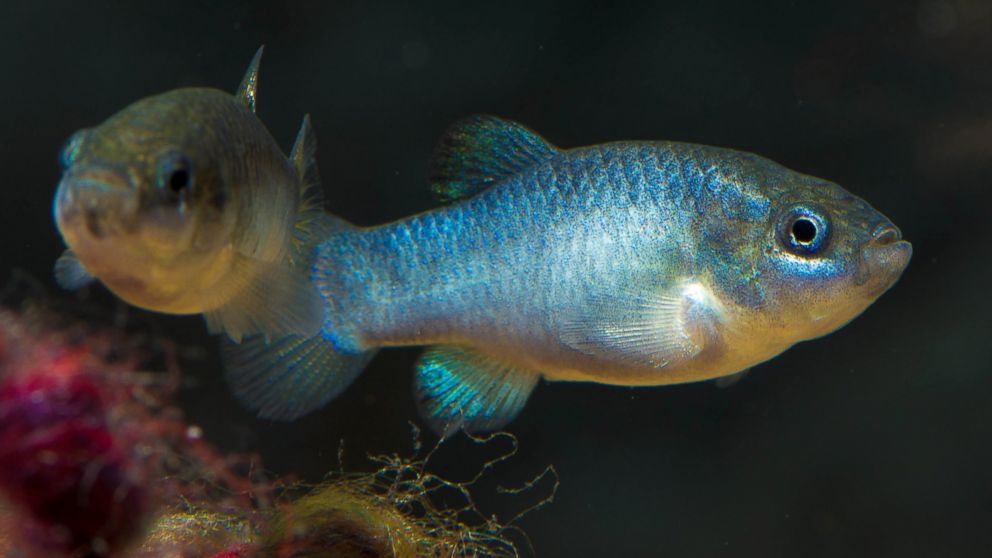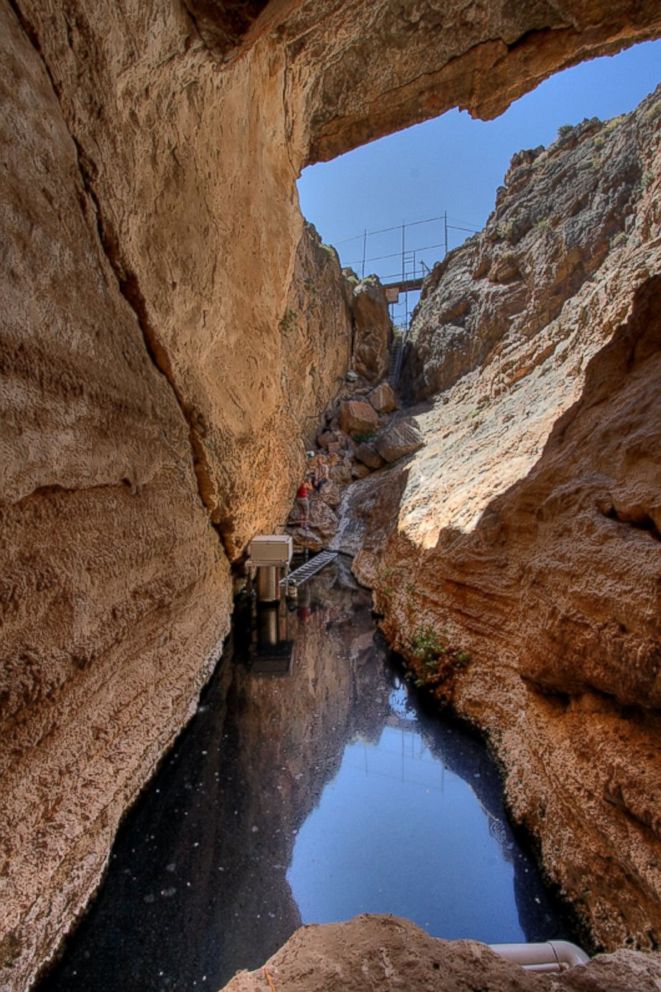Millions Spent To Save a Tiny Fish

— -- A few miles east of California's Death Valley a chain link fence with barbed wire circles a small pond. Surveillance cameras and alarms, linked to the outside world by a microwave dish, notify authorities if anyone tries to breach the security system, 24 hours a day, seven days a week.
Less than a mile away, a new $4.5 million facility includes a state of the art laboratory and a 100,000-gallon tank that mimics the pond in every way, keeping the temperature of the tank's water at 93 degrees and the oxygen barely high enough to support life, matching the conditions in the desert pond in every way.
This is not a top-secret military operation. It's all part of a decades-old effort to save a species that is thought to be the rarest animal on the planet.
It's a tiny fish, about an inch long, called the Devil's Hole pupfish. It is found nowhere else in the world but in that small pond where it survived the water wars of the Southwest a few decades ago and many other threats since it was placed on the first list of endangered species of the United States in 1967.
Ten years later, the U.S. Supreme Court issued a ruling that forced a reduction of groundwater extraction, which had lowered the water level in the pond so much that it was almost impossible for the pupfish to reproduce. Chalk up one major round to the fish.
"It's a survivor," conservation biologist Steven Beissinger of the University of California, Berkeley, said in a telephone interview.
How the Clever Hummingbird Tortures Scientists
How The Naked Mole Rat Could Help You Live Longer
Why You Don't Smell Like a Dog
Beissinger has been studying past failures to save the pupfish -- and there have been many -- to see what has gone wrong. His research, conducted at the request of the U.S. Fish and Wildlife Service, the National Park Service and the Nevada Department of Wildlife, was published in the journal PeerJ.
Beissinger found that transferring too many adult fish to a safe haven in hopes of replenishing the species will place the pupfish in greater danger of extinction. It is better to transfer a few eggs. Yet even under the best of circumstances, he concluded, the fish faces a 28 percent to 32 percent risk of extinction over the next 20 years.
Not good odds.
There are probably fewer than 100 Devil's Hole pupfish in the pond today, and their numbers have fluctuated wildly ever since the species was discovered in 1930. You are not likely to ever see one, and if you did it would be hard to tell it from the many other species of pupfish that inhabit other ponds throughout the region.

So why should anyone care about this particular fish? Is it worth all this effort?
"That's the $64 question," Beissinger said, although he clearly is on the side of the fish.
He has been involved in conservation biology research for a long time, and he concedes that many efforts to restore wild populations have failed, although the record is better for preventing extinction. He said about 250 species would have died out without human intervention, but only about 50 have fully recovered.
Many threatened species are critical parts of the web of life. They disperse seeds or pollinate plants or provide nourishment for prey and help keep nature in balance. Many arguments for Herculean efforts to save species are based on what they can do for us -- provide new medicines, help us in research, perhaps even supply genes that can fight human illnesses.



